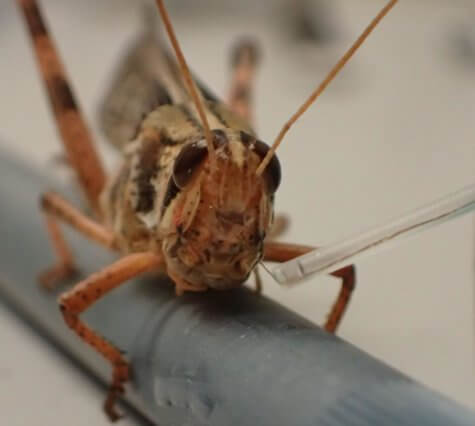
Photo by Illuvis on Pixabay
ST. LOUIS — Locusts don't have a great reputation. Dating all the way back to biblical times, these infamous insects are known for two things: swarms and destruction. So are these pests good for anything? Scientists say yes, and they're giving them an interesting new job: bomb detection! Using electronic implants, engineers in St. Louis find they can read a locust's brainwaves and the bugs are able distinguish between different kinds of explosives.
A team from Washington University reveal they are able to hijack the olfactory system of locusts, training them to locate vapors coming from TNT and other chemicals. By attaching a robotic sensing system to the insects, scientists can tell when a locust's brain senses a change in the air.

Tiny terrors get a new job
Locusts are part of the grasshopper family and can travel great distances through the air. Although these large tropical bugs usually live solitary lives, dry spells can force them to cluster together. When rain returns however, they start reproducing and their numbers explode. These infamous “plagues” then devour crops and cause famine in the areas they swarm.
“We didn’t know if they’d be able to smell or pinpoint the explosives because they don’t have any meaningful ecological significance,” says biomedical engineering professor Barani Raman in a university release. “It was possible that they didn’t care about any of the cues that were meaningful to us in this particular case.”
Raman's lab previously discovered they could decode the locust olfactory system, allowing them to determine what they're smelling in various situations. Using that breakthrough, scientists are now exposing the insects to TNT, DNT, RDX, PETN, and ammonium nitrate. All of these explosives have diverse chemical makeups for the bugs to sniff out.
“Most surprisingly... we could clearly see the neurons responded differently to TNT and DNT, as well as these other explosive chemical vapors,” Raman reports.
The locust bomb-mobile
To test how well locusts can detect bombs, they put them into the “odor box and locust mobile.” The bugs are driven around inside a tiny robotic vehicle while scientists pump different vapors into an enclosed space. As the cars taxis the locusts around, researchers monitor how their brains react to certain explosive odors.
“You know when you’re close to the coffee shop, the coffee smell is stronger, and when you’re farther away, you smell it less? That’s what we were looking at,” the professor explains.
To maximize their abilities, the Washington University team had to create a new surgery technique to attach electrodes which don't harm the locusts or hinder their mobility. Once in place, researchers can read an insect's neural activity and know when they smell a bomb within 500 milliseconds.
The new bomb-sniffing dog?
Study authors hope locusts can give agencies like the Department of Homeland Security a new tool for searching various locations. Using the biblical pest might seem strange, but animals have a storied history of helping humans sniff out trouble.
“This is not that different from in the old days, when coal miners used canaries,” Raman says. “People use pigs for finding truffles. It’s a similar approach — using a biological organism — this is just a bit more sophisticated.”
The study appears in the journal Biosensors and Bioelectronics: X.
[fb_follow /]











